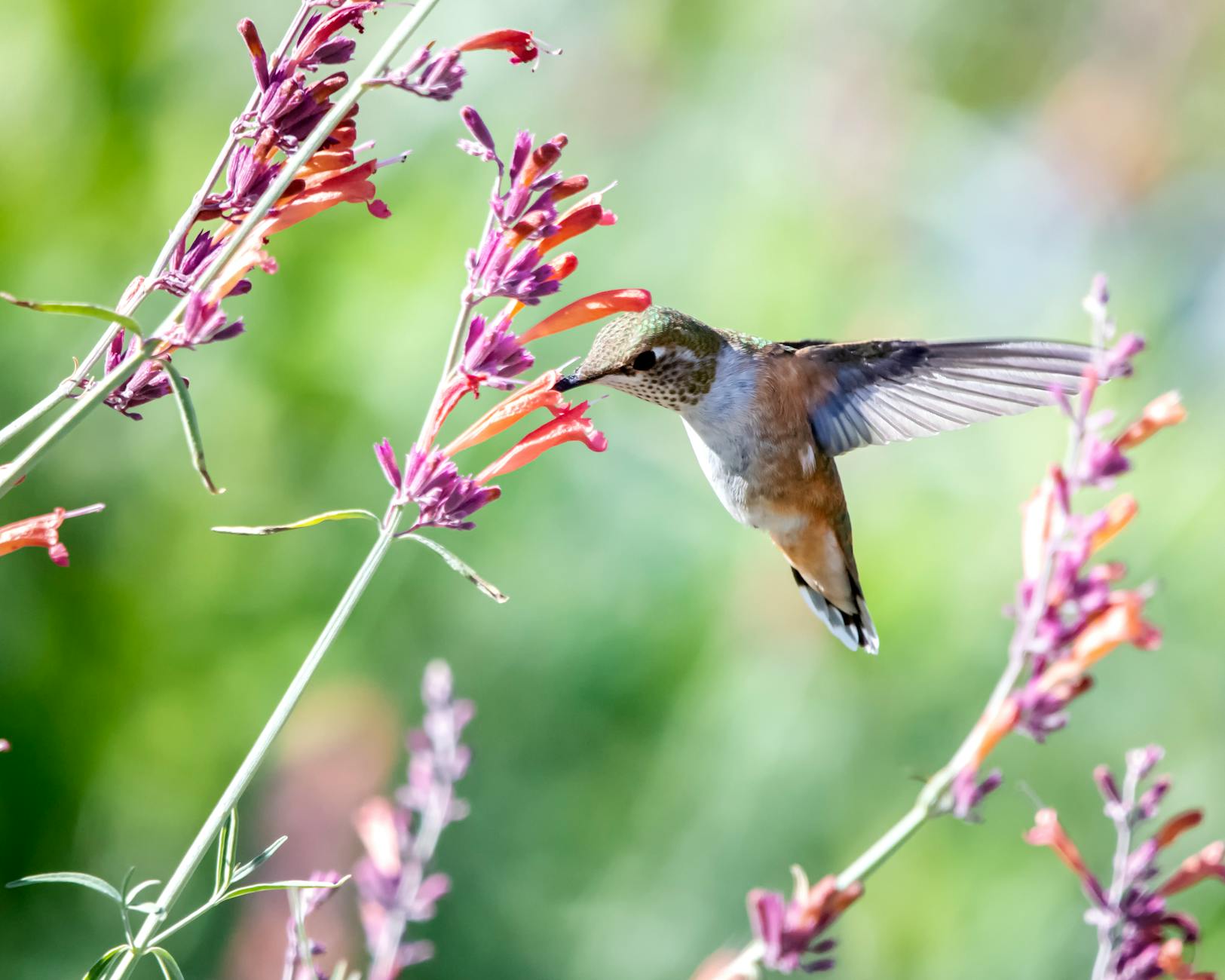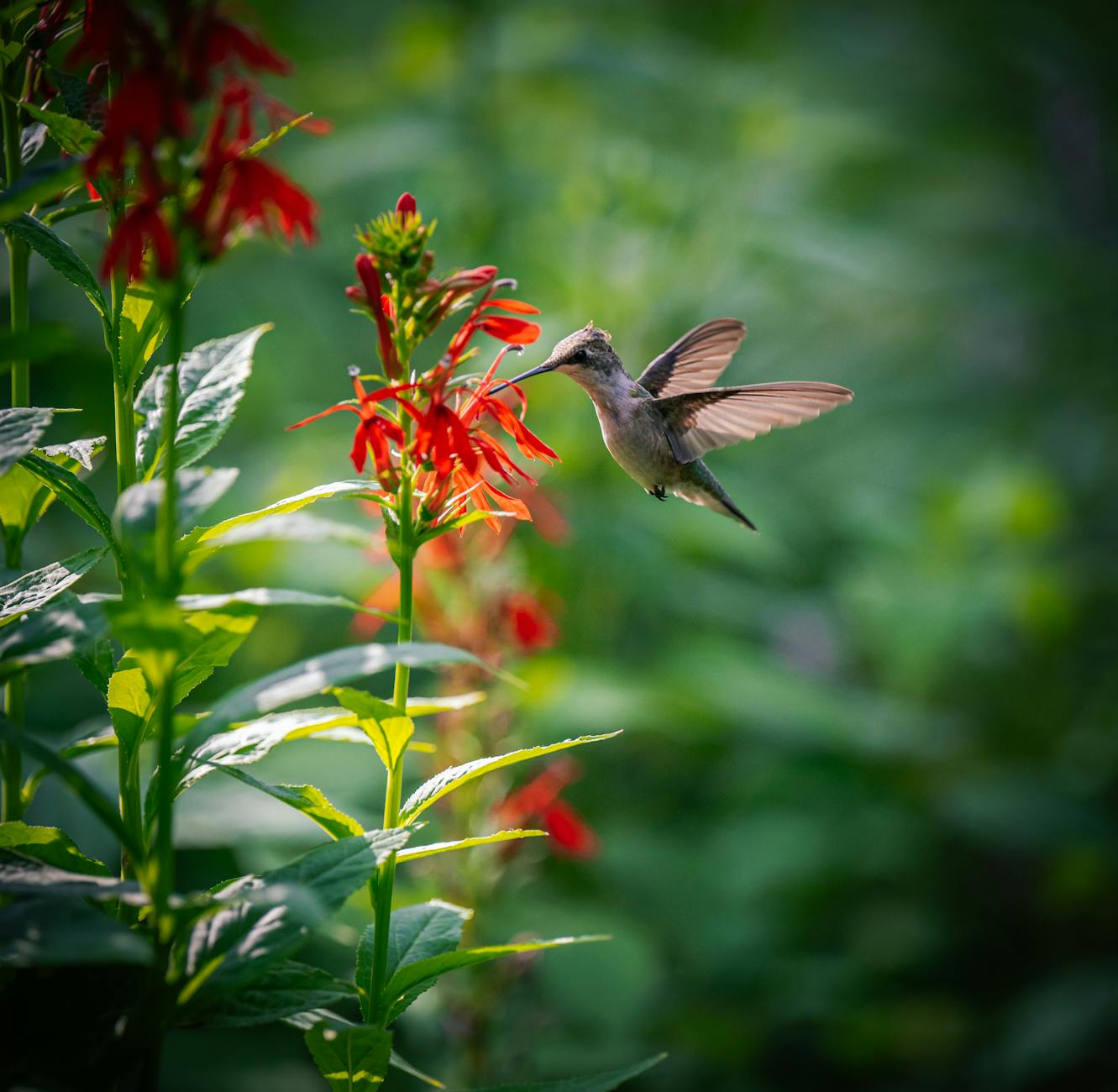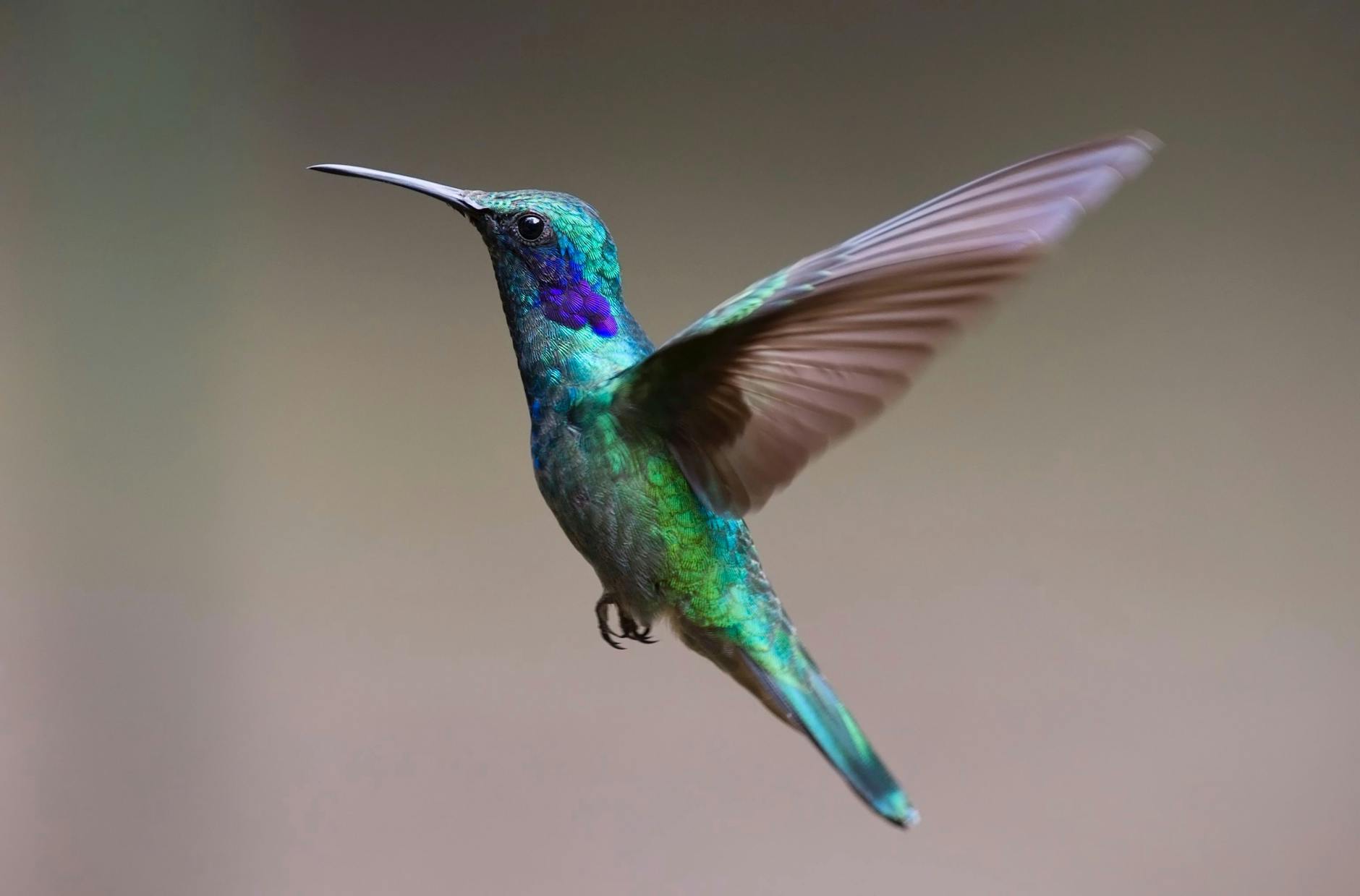Fun Facts About Hummingbirds That Will Amaze You
Hummingbirds are nature’s tiny wonders, combining beauty with a surprising strength. These minute creatures, often weighing less than a coin, are more than just pollinators; they’re miracles of evolution, capable of feats that defy expectations. From their dazzling colours to their ability to hover mid-air or even fly backward, hummingbirds are full of surprises. In this post, we’ll share some amazing facts, shedding light on what makes these birds so extraordinary.
Diverse Species of Hummingbirds
Hummingbirds are some of the most fascinating creatures on Earth, marked by their vibrant colours, quick movements, and remarkable adaptability. Found exclusively in the Western Hemisphere, these incredible birds thrive across an impressive range of ecosystems, from dense rainforests to mountainous regions. Let’s take a closer look at their diverse species and what sets them apart.
Number of Species Worldwide
Did you know there are over 360 different species of hummingbirds worldwide? These tiny marvels belong to the family Trochilidae and represent one of the most diverse bird families known. Their habitats span from the southern tips of Chile and Argentina to as far north as Alaska, making them remarkably versatile creatures. You’ll find the greatest variety in the tropics, especially in South America.
For example, the International Ornithologists’ Union confirms there are currently 366 recognised hummingbird species spread across 112 genera. Species like the vibrant Rufous Hummingbird and magical-looking Anna’s Hummingbird are just two examples among the hundreds dazzling the avian world. Read more about hummingbird species here.
Distinctive Features of Species
Each hummingbird species has distinctive traits, making them unique in their own right. Differences range from their size and feather colours to their foraging habits and behavioural patterns.
- Size Variations: The smallest hummingbird, the Bee Hummingbird of Cuba, grows just 5 centimetres long, while the largest, the Giant Hummingbird, can reach an impressive 20 centimetres.
- Colouration: Their feathers often shimmer in the sunlight, giving off iridescent effects. Some species, like the Violet-Crowned Hummingbird, are adorned with dazzling purples and greens, while others show subtler tones.
- Behavioural Traits: Certain species perform acrobatics mid-air to attract mates, while others, like the Ruby-Throated Hummingbird, are territorial and fiercely protective of their feeding grounds. Explore more about their features here.
These differences extend even to their diets and habitats. For instance, while all hummingbirds feed on nectar, some species are also skilled insect hunters, snapping up small flies and spiders mid-air like professional aerialists. It’s a remarkable testament to their adaptability.

Photo by Ignacio Andres Yañez Grandon.
From their mind-blowing array of colours and sizes to their behaviours, these tiny avian dynamos continue to enchant us. Each species brings something new and exciting to the world of hummingbirds, adding to their allure and mystique.
Unmatched Flight Abilities
Hummingbirds are not just admired for their vibrant colours and speed; their flight capabilities set them apart in the bird kingdom. Unlike other birds, hummingbirds have unique adaptations that allow them to perform stunning aerial feats. Let’s explore how these tiny aviators achieve what no other bird can.
Hovering and Maneuverability
Hummingbirds are the only birds capable of hovering in mid-air, flying backwards, and even upside down. This is possible due to their specialised ball-and-socket wing joints, which let them rotate their wings in a figure-eight pattern. Most birds produce lift only on the downstroke, but hummingbirds generate lift on both the upstroke and downstroke, making their movements incredibly versatile.
Their agility is not just a spectacle but a survival tool. Being able to hover enables them to access nectar from flowers with pinpoint precision. They can also stop on a dime or adjust their angle mid-flight, which is critical when navigating through dense foliage or avoiding predators. Learn more about their flight mechanics here.

Photo by Frank Cone.
Wingbeat Speed
A hummingbird’s wingbeat speed is nothing short of astounding. Depending on the species, their wings can beat between 50 to 80 times per second. For instance, the Ruby-Throated Hummingbird flaps its wings at roughly 53 beats per second, while smaller species can reach even higher frequencies. These rapid beats produce the characteristic humming sound that gives the bird its name.
When hovering, their wing muscles work exceptionally hard, consuming more oxygen relative to body size than nearly any other vertebrate. Some species increase their wingbeat speed during courtship displays or when escaping predators, showcasing incredible bursts of energy. Dive into the science of wingbeat speeds here.
Each species has its own wingbeat “signature,” much like a fingerprint. These variations often correspond to size, with smaller birds beating their wings faster due to their lighter frame. Such adaptability is a testament to their evolutionary brilliance.
Incredible Feeding Habits
Hummingbirds are not just beautiful; they have fascinating feeding habits that play a crucial role in their survival and the ecosystem. Their unique adaptations allow them to meet their dietary needs while contributing to pollination, making them remarkable creatures.
Flower Visits and Pollination
Hummingbirds are tireless foragers, visiting hundreds, if not thousands, of flowers each day. They are essential pollinators, often unaware of the critical role they play in plant reproduction. As they feed on nectar, they unintentionally transfer pollen from one flower to another, facilitating cross-pollination. This process helps ensure the continuation of various plant species, contributing significantly to biodiversity.
A single hummingbird can visit between 1,000 to 3,000 flowers daily to meet its energy requirements. They have a long, specialised beak that allows them to reach the nectar deep within tubular flowers. As they sip the sweet liquid, their heads brush against the flower’s reproductive parts, effectively dusting themselves with pollen. This is why it’s essential for gardeners to plant a variety of flowering plants to aid these birds and encourage their natural behaviours. Learn more about hummingbirds and their vital role in pollination here.

Photo by Chris F.
Dietary Needs
Hummingbirds primarily feed on nectar, but their diet is much more varied than many people realise. In fact, 80% of their diet comprises insects and spiders, which provide essential proteins and fats. This protein source is crucial, especially during breeding seasons when they need extra energy and nutrients to raise their young.
Common insects they consume include:
- Ants
- Mosquitoes
- Beetles
- Aphids
- Gnats
These tiny hunters exhibit remarkable agility in the air, capable of capturing insects while hovering or in flight. By incorporating insects into their diet, they enhance their nutritional intake, which is vital for their high-energy lifestyle. Their need for protein from insects is often overlooked, but it illustrates just how diverse their feeding habits have become. For more insights into hummingbirds’ diets, check out this article on the subject here.
Understanding these feeding habits reveals the critical role hummingbirds play in our ecosystem and highlights the importance of creating supportive environments for them. By planting a diversity of flowers and providing natural habitats, we can encourage these tiny yet impactful birds to flourish.
Remarkable Cognitive Abilities
Hummingbirds possess extraordinary cognitive abilities that enable them to thrive in their dynamic environments. Their intelligence is apparent in their memory and learning skills, crucial for survival.
Memory for Locations
Hummingbirds excel at remembering the locations of feeders and flowers, which is essential for their feeding habits. Research shows that these birds can create detailed cognitive maps of their surroundings, similar to humans. They remember not only where the flowers are but also when they were last visited and when to return for the nectar.
The memory of a hummingbird relies on an enlarged hippocampus, the part of the brain associated with spatial memory. This adaptation allows them to navigate through complex environments effectively. A hummingbird can recall specific feeder locations, ensuring they return to places with freshly replenished nectar. In fact, studies indicate they can remember the exact timing of when flowers will be filled again. Learn more about their impressive memory here.

Photo by Pixabay.
Learning and Adaptation
Hummingbirds demonstrate remarkable learning and adaptation skills, essential for their survival in changing environments. They can quickly adjust their behaviour based on food availability, weather conditions, and predator presence. This adaptability is crucial as it enables them to optimise their foraging strategies for maximum energy gain.
For example, when nectar becomes scarce, hummingbirds may shift their focus to different flower species or stock up on insects for additional protein. This behaviour highlights their intelligence in adapting to varied circumstances. Additionally, hummingbirds can learn from each other, helping their species thrive collectively. They develop recognition of dominant flowers and quickly adapt to new feeding locations. Explore more about their survival adaptations here.
Their quick-thinking nature and ability to learn from past experiences make them not just resilient but also remarkable aviators in the natural world.
Unique Physical Traits
Hummingbirds are not just a sight to behold; their physical characteristics are a testament to their adaptability and survival. From their size to the structure of their feathers, these traits play a crucial role in their daily lives.
Size and Weight
Hummingbirds are famously small, making them one of the tiniest bird species on the planet. Most species range from about 3 to 5 inches in length, with some, like the Bee Hummingbird, measuring just 2.2 inches and weighing less than a penny. In contrast, the larger Giant Hummingbird can reach 8 inches long and weigh up to 20 grams.
Their size isn’t uniform, with variations depending on the species. For instance, the magnificent Ruby-Throated Hummingbird tends to be a bit larger than the diminutive Anna’s Hummingbird. This diversity in size allows each species to occupy different ecological niches and feed on a variety of flowering plants. Their small stature is a marvel of evolution, enabling them to access nectar in flowers that are inaccessible to larger birds. Learn more about their physical characteristics here.
Feather Structure
Hummingbirds have an intriguing feather structure that contributes significantly to their survival and appearance. Unlike most birds, hummingbirds have a minimal number of feathers—typically around 1,000. In comparison, larger birds can have several thousand.
What makes their feathers unique is the way they create vibrant colours. The shimmering hues come from tiny microscopic structures within the feathers, rather than just pigments. These structures, known as melanosomes, are arranged in pancake-like layers that refract light, giving the feathers their iridescent quality. This not only enhances their beauty but also helps in species recognition and mate attraction.
Their feathers are also lightweight and well-suited for the high-energy lifestyle of a hummingbird. Each feather plays a vital role in flight, allowing for precision hovering and rapid manoeuvrability. Discover more about feather structure here.

Photo by Inga Engele.
The unique physical traits of hummingbirds, from their compact size to their extraordinary feathers, truly set them apart in the avian world. These features not only enhance their beauty but also contribute significantly to their survival and success in diverse habitats.
Migration Patterns
Hummingbirds are remarkable travellers. They jet across vast distances, sometimes over thousands of miles, in pursuit of warmer climates and abundant food sources. Their migration patterns are not just fascinating; they reveal intricate survival strategies that adapt them to changing environments.
Distance Travelled
Some species of hummingbirds embark on incredible journeys during migration. The Ruby-throated Hummingbird, for example, flies from North America to Central America for the winter. This migration covers approximately 3,000 miles and involves crossing the Gulf of Mexico. It’s a risky venture, but these small birds are equipped to handle such challenges.
The Rufous Hummingbird is another long-distance traveler. It migrates between breeding grounds in Alaska and wintering areas in Mexico. This round-trip can exceed 4,000 miles. Such remarkable distance travelled showcases their resilience and adaptability to different habitats.
Notably, hummingbirds often repeat migration routes year after year. Banding studies have shown that they return to the same locations, relying on a mental map to guide them. This impressive ability is not just instinctual; it is an extraordinary display of navigation and memory. Learn more about hummingbird migration here.

Photo by Frank Cone.
Navigational Skills
Hummingbirds possess remarkable navigational skills, essential for successful migration. They can detect changes in daylight, which signal the onset of migration. This awareness allows them to align their movements according to the changing seasons.
Their ability to navigate is likened to having an internal GPS. They use landmarks like mountains and rivers to orient themselves during long journeys. It’s not just about instinct; research indicates that they create precise maps in their brains, helping them recall routes and important locations.
Further, hummingbirds are sensitive to the Earth’s magnetic field. It offers another layer of guidance during migration. This ability helps them maintain their course over long distances, even when visual cues are scarce. Discover more about how hummingbirds navigate here.
Each migratory journey is not only a testament to their endurance but also to their incredible cognitive abilities. As they traverse vast landscapes, they demonstrate skills that are essential for their survival and success.
Understanding these migration patterns deepens our appreciation of hummingbirds and their place in our ecosystem. It underscores the need to protect their habitats, ensuring these tiny avian wonders can continue their extraordinary journeys.
Conclusion
Hummingbirds truly amaze with their vibrant colours and impressive flight abilities. From their incredible migration patterns to their clever foraging habits, these tiny birds are full of surprises. Each species brings unique traits, showcasing nature’s diversity and adaptability.
As you learn more about hummingbirds, think about how you can support these remarkable creatures in your own garden. Planting a variety of flowering plants can create a welcoming habitat for them.
What other fascinating facts about these beautiful birds have you discovered? Share your thoughts and let’s keep the conversation going!










